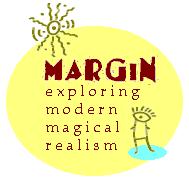

r e t r o s p e c t i v e
HARUKI MURAKAMI

It's All About the Journey
IN 1981, Haruki Murakami made a decision which would forever change his life. He sold his Kokobunji/Tokyo jazz bar, Peter Cat, in order to devote his life to writing.It wasn't as if he hadn't been writing before. He'd even published two books by then: Hear the Wind Sing (1979) and Pinball (1980), two parts of The Trilogy of the Rat. But the move to set aside all other aspirations in pursuit of the writer's dream is always a risky one. It requires discipline, vision, patience and a surplus of imagination, all bound up in the hope that all the effort will pay off.
Murakami developed all of these traits early on and has since become one of Japan's most imaginative authors*, with a world-wide following. His stories transgress boundaries as easily as little girls skip ropes. In A Wild Sheep Chase: A Novel—the book he published one year after selling Peter Cat—the narrator pursues a mysterious sheep emblazoned with a star-like shape. In The Wind-Up Bird Chronicle, which many critics deem Murakami's greatest work, a jobless man searches for a lost cat and finds himself in a complicated real world fused seamlessly with the impossible. Kafka on the Shore, while not reminiscent of Franz Kafka, takes on Borgesian themes, of mental labyrinths and extraordinary libraries. And Murakami's short stories in The Elephant Vanishes are borderline Twilight Zone in their strangeness.
But none of these works would have been possible—or at least they would have been extremely difficult to achieve—had Murakami not sold his bar.
As a university student, Murakami delighted in reading Western literature, especially the work of oddball American writers such as Richard Brautigan and Kurt Vonnegut. At one point he decided to become a writer, one as "hip" and "cool" as either of his literary heroes. However, he gave up at the young age of 23, frustrated by his lack of experience and what he perceived as his inability to write at the level of his two favorite authors.
The jazz club took all his time, but it also became his way to achieve independence, a sense of self, a feeling of accomplishment. A few years later, he realized he wanted to start writing again, so he waited until after the bar closed and began the process anew at his kitchen table. By age 30, he'd published his first book.
Without the Peter Cat to carry Murakami into selfhood, who knows what would have happened? After selling the jazz bar, he quit smoking and started to pursue marathon running (but he did not exchew jazz—Murakami's music collection measures in at around 40,000 pieces). And he's written and published nearly a dozen books and written numerous short stories since then, all of them in pursuit of identity.
Murakami's journey toward the dream offers generous consolation to those young writers who also struggle toward their destinations, especially those with a ken for the odd, as well as a desire to dip into complicated pool that is magical realism.
________
*For Western readers unfamiliar with Asian literature and who might have trouble dissecting Murakami's narratives, Matthew C. Strecher's article in the Journal of Japanese Studies, "Magical Realism and the Search for Identity in the Fiction of Murakami Haruki," sheds light on the dynamics of magical realism of the Asian variety, especially in discussions about Japan and the individual identity.

margin home | contents | links | reading list | marginalia | contributors | staff | guidelines | kudos | subscriptions | contact us
Layout, design & revisions ©Tamara Kaye
Sellman, Webmaster
Active home URL:
http://www.magical-realism.com
(also:
https://www.angelfire.com/wa2/margin/index.
html)
TERMS OF USE: This site contains copyrighted materials, including but not limited to text and graphics. You may not use, copy, publish, upload, download, post to a bulletin board, include in any weblog or otherwise transmit, distribute or modify any elements of this site in any way, except that you may download one copy of such contents on any single computer for your own personal, non-commercial use, provided you do not alter or remove any copyright, author attribution or other proprietary notices.